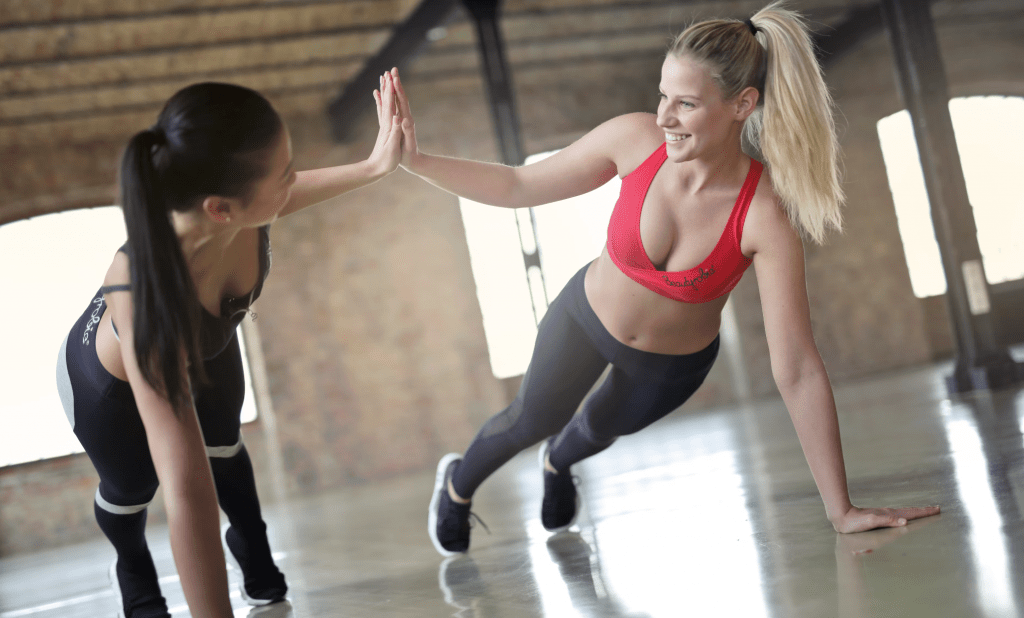In the ever-evolving realm of fitness, where trends flicker and fade, there exists a timeless gem that withstands the test of changing fads—the forearm plank. This deceptively simple yet endlessly versatile exercise transcends the transient nature of many fitness trends by engaging multiple muscle groups simultaneously and offering a myriad of captivating variations.
Aaron Leventhal, a seasoned coach and the proprietor of Minneapolis Fit Studio, sheds light on the nuanced brilliance of the forearm plank. “It might appear as a straightforward static pose, devoid of movement,” he articulates, “yet beneath this apparent simplicity, profound transformations unfold, fortifying the core and awakening various major muscle groups.”
Let’s delve into the intricacies of the forearm plank exercise, exploring a step-by-step guide that unravels the symphony of muscles activated:
- Alignment Perfection: Assume the push-up position, meticulously aligning shoulders with wrists. Descend gracefully onto your forearms, ensuring they remain parallel with palms facing the earth.
- Legs in Tandem: Extend your legs with grace, letting them stretch straight behind you. Rise onto your toes, orchestrating a symphony that activates the hamstrings and quadriceps.
- Shoulder Poetry: Initiate a poetic movement—press your shoulders down, crafting a gentle rounding of the upper back to safeguard delicate joints. Simultaneously, tighten the abdominal canvas to prevent any unwarranted arching in the lower back. Squeeze your glutes for a harmonious ensemble.
- Elbow Elegance: Commence the movement gracefully by pulling your elbows in the direction of your toes. Immerse yourself in the art of breath, inhaling deeply to orchestrate a melodic supply of oxygen to your hardworking muscles.
- Rhythm of Rest: Engage in a rhythmic dance of holding and resting, oscillating between the two states for a duration of 10-30 seconds. Repeat this elegant choreography 3-5 times to fully immerse yourself in the experience.
The beauty of the forearm plank lies not only in its simplicity but also in the artistic variations one can introduce. Consider the forearm plank a canvas awaiting the strokes of creativity: side forearm planks, extensions, rows, leg lifts—the possibilities are as vast as the imagination.

In this ballet of fitness, a symphony of muscles takes center stage:
- Six-Pack Sonata: The rectus abdominis, or the six-pack muscles, orchestrates the front-and-center movement.
- Oblique Overture: The obliques, akin to melodic notes, contribute to the harmonious rotation of the torso.
- TVA Serenade: The transverse abdominis, a subtle yet powerful muscle, aids in stabilizing the spine and pelvis.
- Erector Spinae Elegy: This group of muscles flanking the spine plays a pivotal role in maintaining the spine’s curvature.
- Quadriceps Quartet: The quadriceps, a four-part harmony, wraps around the front of the thigh bones, acting as extensors for the knee joint.
- Pectoralis Major Melody: Situated in the anterior chest, the pectoralis major contributes to shoulder stability and upper body strength.
Beyond the apparent stillness of the forearm plank lies a surprising array of benefits:
- Core Crescendo: The isometric nature of the forearm plank crescendos into enhanced core strength, fortifying muscles responsible for spinal stability.
- Postural Symphony: This exercise, akin to a musical composition, fortifies the spine against the discordant notes of slouching, fostering an upright and poised posture.
- Gateway to Movement Mastery: A robust core, sculpted through regular forearm plank practice, becomes a foundational stepping stone for a plethora of movements. Whether it’s swinging kettlebells, executing deadlifts, delving into high-intensity interval training, or embarking on safer running endeavors—the forearm plank paves the way for mastery in motion.
Leventhal, the maestro of fitness, shares an insight into the broader implications of this seemingly simple exercise. “Regularly engaging in the forearm plank serves as a cornerstone for an intricate movement repertoire,” he imparts. “It transcends the confines of a workout routine, imprinting better form across the canvas of daily activities.”
In the grand tapestry of fitness, the forearm plank emerges not merely as an exercise but as a choreography of strength, balance, and endurance—a timeless masterpiece that stands resilient against the fleeting tides of fitness trends.
As we conclude this symphony of strength and resilience embodied by the forearm plank, it’s essential to appreciate the broader implications resonating beyond the realms of the gym. Picture it as a rhapsody that not only sculpts muscles but orchestrates an ensemble of benefits that transcend the confines of a workout.

The ripple effect of forearm plank mastery extends into the realms of daily life, transforming mundane activities into a ballet of poise and strength. The stability woven into your core during this seemingly static pose becomes the silent conductor, guiding you through the movements of life with grace and vigor.
Moreover, the forearm plank isn’t a rigid composition; it’s a canvas for artistic exploration. Each variation, from the side plank to the leg lift, is a brushstroke painting a picture of versatility. Embrace this dynamic workout not merely as an exercise but as a continuous composition, where your body is both the instrument and the masterpiece.
As you embark on this journey of fitness symphony, remember that mastery takes time. Strive not for perfection but for the harmony that unfolds with each practice. With the forearm plank as your steadfast companion, you’re not merely building a robust physique.



+ There are no comments
Add yours